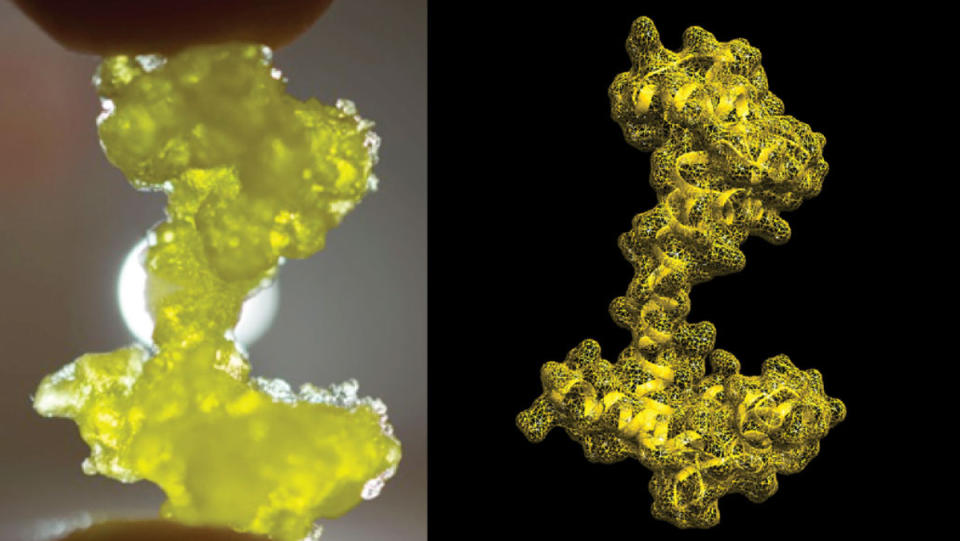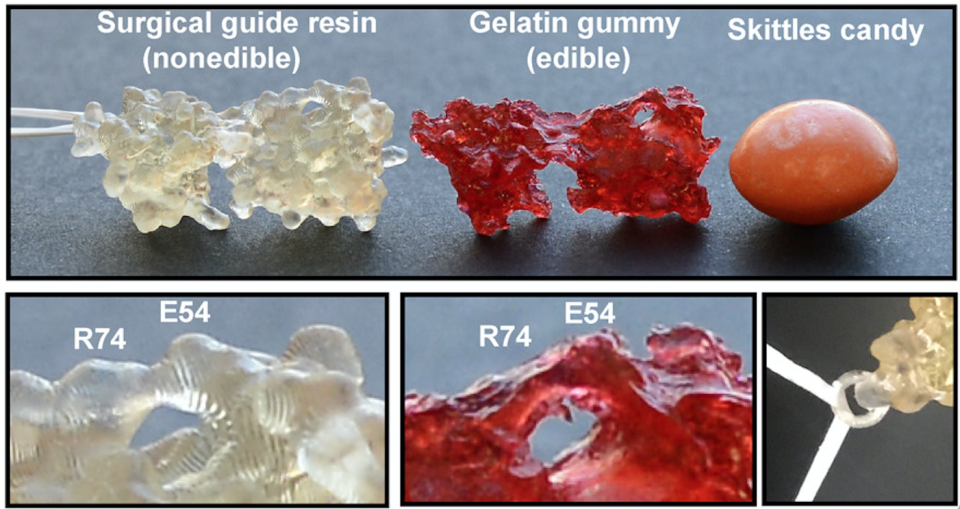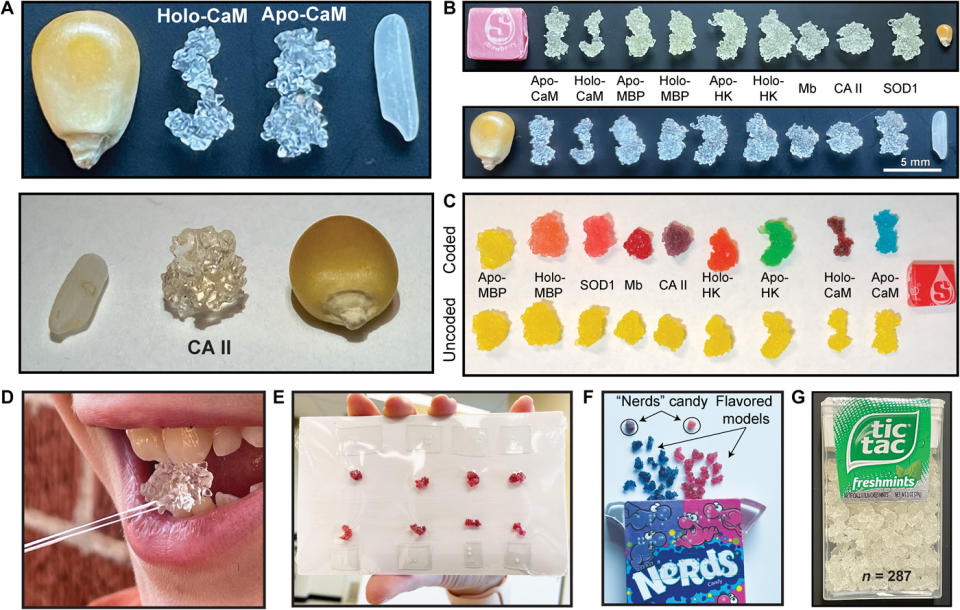Gummy Models May Be Aid for Students with Vision Loss
In an attempt at a tasty revolution in science learning, a team of researchers is investigating the use of gummy versions of models of molecules as a teaching aid. The candy models, aimed specifically at helping those with vision loss, have just gone through their first round of testing. And the results hint at a possible boon for aspiring scientists with visual impairments.

Bryan F. Shaw et al. / Science Advances
Science News reported on the new study, which the researchers published in the journal Science Advances. The lead author of the study, Bryan Shaw, was inspired to make the gummy models of molecules thanks to his 13-year-old son Noah Shaw. Noah, who wants to be a scientist like his father, lost one of his eyes to a retinoblastoma—a cancer that begins in the retina. Bryan wanted to find a way to make learning about molecules more accessible for his son.
“Most of the stunning imagery in science is inaccessible to people who are blind,” Bryan told Science News. Indeed, in the study, the authors note there are handheld models of molecules for students who can visualize 3D objects, but little in the way of learning about the same objects via tactile sensations in the mouth.

Bryan F. Shaw et al. / Science Advances
For their experiment, the researchers created bite-size 3D models of protein molecules from “gummy bear” gelatin, as well as nontoxic resin for non-edible models. The scientists made each molecule-model gummy around the size of a Skittle, and gave them different “atomic” structures. (Atoms in this case being bits of gummy.) The team then tested study participants to see if they could feel out the differences between the models with their tongues.
According to the results, most participants—281 college students and 31 grade schoolers—could identify models by mouth. With an astonishing 85.59% accuracy, no less. About 41 percent of participants were even more likely to remember a protein’s structure if they had it in their mouths at some point, versus if they’d only seen and felt it. (Each participant had to examine one protein model by mouth or hand. Then researchers gave the participants subsequent protein models, which they had to identify as the same as the original or different.)

Bryan F. Shaw et al. / Science Advances
Despite the insightful trial run, and the possibility of encoding information about molecular properties into the different gummies via varying flavors, the researchers still face challenges in bringing the educational candy to market. The equipment necessary to print the non-edible gummies and sterilize them between use is costly. And, most importantly, participants who have visual impairments need to participate in a trial. Although if that works out, Bryan and his colleagues may be able to lick this deficiency in science education for good.
Feature image: Bryan F. Shaw et al. / Science Advances
The post Gummy Models May Be Aid for Students with Vision Loss appeared first on Nerdist.

